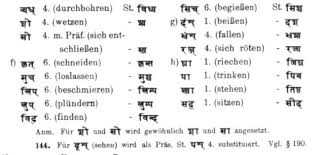The Relevance of Sanskrit in Today’s World

Introduction
Sanskrit, one of the oldest languages in the world, plays a pivotal role in the cultural and historical landscape of India. Often referred to as the mother of many Indian languages, Sanskrit is not merely a classical language but a key to understanding ancient Indian philosophy, literature, and science. Its revival and study are increasingly relevant in today’s globalized society, where there is a growing interest in traditional knowledge systems and their applications in contemporary life.
The Rich Heritage of Sanskrit
Sanskrit is the liturgical language of Hinduism and is also used in Jainism and Buddhism. It forms the basis of many significant ancient texts, including the Vedas, Upanishads, and various epics like the Mahabharata and Ramayana. These texts not only provide insights into spiritual practices but also include advanced concepts in mathematics, astronomy, and psychology. In recent years, there has been a resurgence of interest in this ancient language, with several universities in India and abroad offering courses in Sanskrit.
Current Trends and Initiatives
In India, several initiatives by government and non-governmental organizations aim to promote the study and use of Sanskrit. The Rashtriya Sanskrit Sansthan, an autonomous organization under the Ministry of Human Resource Development, has been actively working to encourage Sanskrit education through various programs and scholarships. Additionally, digital platforms and apps have emerged to facilitate learning the language, ensuring that it remains accessible to the younger generations. Schools and colleges are incorporating Sanskrit into their curricula, acknowledging its importance in India’s cultural and educational framework.
Global Interest in Sanskrit
Internationally, there is a growing recognition of Sanskrit’s contributions to linguistics and cognitive science. As researchers delve into the complexities of Sanskrit grammar and syntax, they are uncovering valuable insights into language development and cognitive processes. The language’s structured nature makes it an ideal candidate for studies in artificial intelligence and computational linguistics, sparking interest from academic institutions worldwide.
Conclusion
The significance of Sanskrit boils down to its intrinsic value as a repository of ancient knowledge and wisdom. In a world increasingly challenged by cultural homogenization, the revival of interest in Sanskrit offers a path to rediscover one’s heritage while also fostering dialogue between ancient philosophies and modern scientific thought. As efforts to promote Sanskrit continue, its relevance and appeal in both India and the global arena are poised to grow, solidifying its status as more than just a classical language, but as a vital part of humanity’s linguistic and intellectual heritage.





